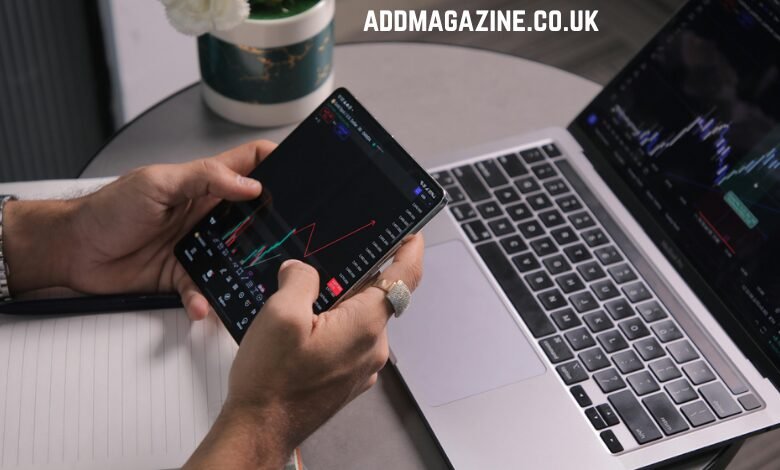Retirement planning usually involves mutual funds, boring index trackers, and financial advisors in suits. Not exactly the world of modern trading platforms with real-time charts and one-click execution.
This LFtrade.net Review comes from an unusual angle. What happens when someone building wealth for 30 years ahead looks at a platform designed for active trading? Can modern tools serve long-term goals, or does the mismatch in timeframes create problems?
LFtrade got evaluated through this retirement-focused lens. Not day trading strategies or quick flips. Instead, questions about building portfolios that compound over decades. Whether the platform supports patient investing or only works for active traders. What features matter when the exit strategy involves retirement age rather than the next quarter.
The Starting Point: Traditional Meets Modern
In this LFtrade.net Review, the journey started with frustration about conventional options. Traditional retirement accounts offer safety but limited control. Robo-advisors automate everything but feel impersonal. Financial advisors charge fees that eat into returns over decades.
Modern trading platforms promise more control and lower costs. But most seem built for people watching screens all day. The question became whether this particular platform could bridge both worlds. Offering hands-on control without requiring constant attention.
Initial skepticism ran high. Can a platform with real-time price updates really work for someone who shouldn’t check their portfolio daily? Does access to hundreds of assets help or hurt when building a focused retirement strategy? The evaluation process meant testing whether flexibility served long-term goals or just created more ways to make mistakes.
Long-Term Portfolio Construction
A key point in this LFtrade.net Review is how the platform handles multi-decade strategy building. Retirement portfolios need different thinking than short-term trading accounts. Asset allocation matters more than individual picks. Rebalancing schedules matters. Tax efficiency becomes crucial over long periods.
The pre-built portfolio options provided useful starting templates. Conservative allocations emphasizing bonds and dividend stocks. Moderate mixes balance growth and stability. These templates reflected actual retirement planning principles rather than just generic risk categories.
Customization allowed adjustments based on specific situations. Someone 30 years from retirement can handle more volatility than someone 5 years out. The platform lets users adjust allocations freely without forcing preset buckets.
Asset class diversification went beyond just stocks and bonds. Real estate investment trusts, commodities, international exposure, alternative assets. Building true diversification meant accessing multiple categories. The platform provided that range without overwhelming complexity.
Portfolio visualization tools showed allocation breakdowns clearly. Pie charts displayed how money is split across asset types. These visuals made rebalancing decisions more intuitive. Seeing that stocks grew to 75% of total value when the target was 60% prompted action.
Rebalancing and Maintenance Reality
Another point to highlight in this LFtrade.net Review is what ongoing portfolio maintenance actually requires. Retirement accounts need periodic rebalancing to maintain target allocations. Markets move differently across asset types, which gradually shifts portfolio composition away from intended ratios.

Manual rebalancing meant selling overweighted assets and buying underweighted ones. The platform made executing these trades straightforward. But it didn’t automate the process or remind users when rebalancing made sense.
Calendar reminders became necessary. Setting quarterly or annual reviews to check allocations and make adjustments. The platform itself didn’t prompt these reviews, which placed responsibility entirely on users to maintain discipline.
Transaction costs during rebalancing added up over time. While individual trades might be commission free, buying and selling multiple positions several times per year created indirect costs through spreads. These expenses needed accounting when comparing to automated rebalancing services.
Position tracking helped monitor individual holdings over the years. The interface showed purchase dates, cost basis, current value, and total return for each position. This historical data supported tax planning and performance evaluation.
Income Generation Features
It must be noted in this LFtrade.net Review that retirement eventually requires converting assets into income. The accumulation phase differs from the distribution phase. Platforms supporting long-term investing need features for both periods.
Dividend tracking showed income generated by holdings. Stocks paying dividends displayed yield percentages and payment schedules. This information helped estimate future passive income potential.
Dividend reinvestment required manual setup. The platform didn’t offer automatic DRIP programs where dividends automatically buy more shares. Instead, dividend payments appeared as cash that users could manually reinvest. This extra step added work but provided control over reinvestment timing.
Interest-bearing assets like bonds showed coupon payments and maturity dates. Planning around fixed income required understanding when payments arrived and when principal returned. The platform displayed this information clearly for each bond position.
Creating an income focused portfolio meant selecting appropriate assets. High dividend stocks, bonds, preferred shares, REITs. The screening tools helped filter for yield percentages, but building a complete income strategy required outside research and planning.
Tax Consideration Blind Spots
A few more insights in this LFtrade.net Review include what the platform handles regarding taxes and what it doesn’t. Retirement investing involves significant tax planning. Minimizing tax drag over decades makes enormous difference to final outcomes.
Transaction history exports provided records for tax filing. Downloading complete trade histories with dates, prices, and amounts. This documentation supported capital gains calculations and record-keeping requirements.
The platform didn’t offer tax loss harvesting automation. This strategy involves selling losing positions to offset gains, which requires manual execution and tracking. Users needed to identify opportunities themselves and execute the trades.
No integration with tax software existed. Information exports came as spreadsheets that required manual entry into tax programs. This extra work during tax season created friction compared to platforms with direct connections to TurboTax or similar services.
The Automation Factor
As can be seen in this LFtrade.net Review, automation capabilities matter enormously for long term investing. Retirement strategies work best when executed consistently regardless of emotions or market conditions. Automation removes human weakness from the equation.

Recurring deposits supported dollar cost averaging. Setting up automatic monthly transfers from bank accounts to investment accounts. This feature enabled systematic investing without requiring monthly manual actions.
Rebalancing automation didn’t exist. As mentioned earlier, maintaining target allocations required manual quarterly or annual reviews and trades. Something to consider in this LFtrade.net Review is that for busy people, this responsibility could slip through the cracks.
The 30 Year Question
It’s worth emphasizing in this LFtrade.net Review that platform longevity matters when planning across decades. Starting a retirement strategy on a platform that disappears in five years creates serious problems.
Company background showed steady growth since 2020. Five years of operation with expanding user base and geographic reach. Not decades of track record, but reasonable evidence of viability. Whether this predicts 30 more years remains uncertain.
Data portability became a critical question. If switching platforms became necessary, the Feature development direction mattered for future needs. Would the platform add retirement-focused tools like required minimum distribution calculators or Social Security integration? Or would development focus on active trading features? The roadmap wasn’t public, making future capabilities uncertain.
This LFtrade.net Review concludes with mixed findings for retirement planning use cases. The platform provides tools that support long-term investing. Diverse asset access, reasonable costs, portfolio tracking, and flexible control all benefit retirement strategies.
But gaps in automation, limited retirement account types, tax planning features, and uncertain long term viability create legitimate concerns. Someone willing to stay hands on with their retirement investing could build a solid portfolio here.
FAQ Section
Can you build a true retirement portfolio here?
Yes, but it requires active management. The platform offers diverse assets and portfolio tools for long-term investing. However, automation features lag behind dedicated retirement platforms. Users need discipline for regular rebalancing and maintenance.
How does this compare to robo advisors?
More control but less automation. Robo advisors handle rebalancing and tax optimization automatically. This platform requires manual execution of those strategies. Cost differences depend on account size and trading frequency.
What happens to your assets if the platform shuts down?
Account assets remain separate from company assets through regulated custody arrangements. Users should maintain external records of holdings and cost basis. Transfer processes to other brokers would follow standard industry procedures.
Is customer support knowledgeable about long-term strategies?
Support staff handle technical platform questions well. Complex retirement planning advice requires licensed financial advisors. The platform offers consultation services but charges fees for personalized guidance.
Can you connect with external financial planners?
No direct integration exists. Financial advisors can review account information if given access credentials. But formal linking between the platform and external advisory services isn’t supported.



